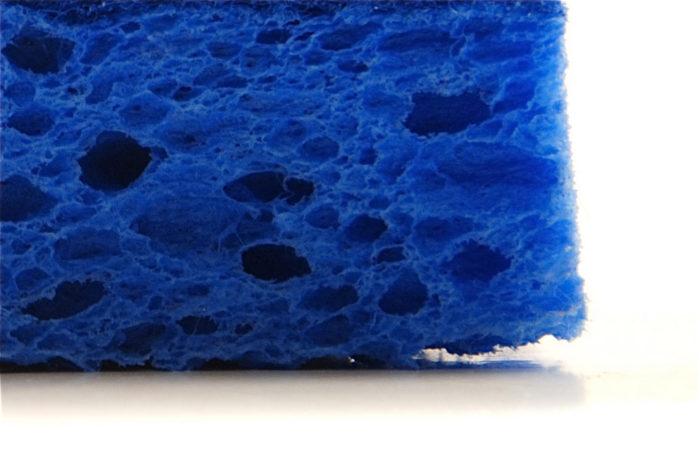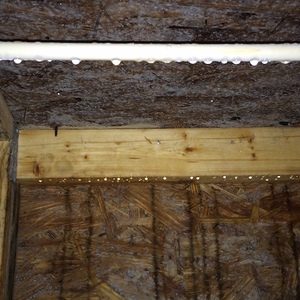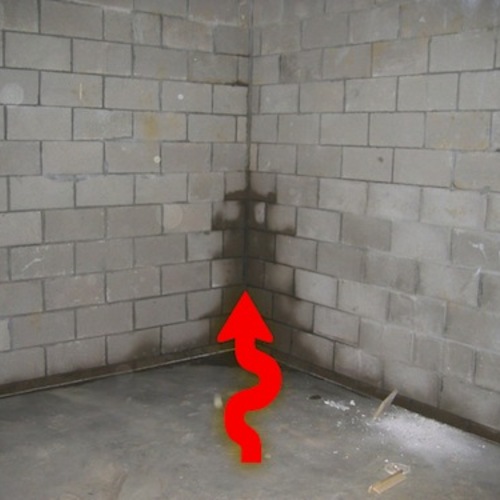Image Credit: Image #1: Gosheshe - Flickr.com
Image Credit: Image #1: Gosheshe - Flickr.com The condensation on this window occurred at precise conditions of surface temperature and concentration of water vapor in the surrounding air.
Image Credit: Image #2: Energy Vanguard Sorption isotherms for wood and brick show how the moisture content of a sorptive material changes as the relative humidity changes. This is a different process than condensation.
Image Credit: Image #3: Professor Chris Timusk
I recently taught a class called What the Duct!? at the Builders’ Boot Camp in Virginia. Paul Francisco was one of the other instructors (teaching about indoor air quality), and on the last evening at dinner, our conversation turned to building science. (Imagine that!)
I don’t recall exactly how we got there, but somehow the question of condensation came up. Paul talked about how Bill Rose, author of Water in Buildings, often asks the question, “Can you get condensation on a sponge?”
If you’ve read Rose’s book, you probably already know the answer. Well, let me rephrase: If you’ve read and absorbed (hint, hint) the material in Water in Buildings, you know the answer. If you haven’t read the book, you may now be able to guess where I’m going with this. (But you should still get yourself a copy and read it anyway.)
What is condensation?
On page 81 of the book, Rose quotes Leonard Haeger from the 1952 Condensation Conference: “I suppose in the beginning we should have a definition of condensation, and to practical men condensation is what you find on a highball glass at 5:30 in the afternoon.”
It’s also what you get on single-pane windows (see Image #2, below), bathroom mirrors, and grass on a summer morning. It happens when air with a certain dew point temperature finds a surface that’s at or below that temperature. It occurs under precise conditions of temperature and water vapor content of the air. It’s a point on the psychrometric chart.
The difference between sorption and condensation
Sponges, of course, can have a specific temperature and interact with the water vapor in air. Unlike a glass surface, however, some materials — like wood, brick, and perhaps sponges — collect water from the air at a wide range of temperatures. They’re sorptive materials. They adsorb and absorb water on the surfaces and in the pores.
Adsorption, briefly, refers to water that’s close to and bonded strongly to a surface. When a material pulls in so much water that some of the water molecules are in the pores but not bonded strongly to the surface, those water molecules are absorbed. The two phenomena together are referred to as sorption.
Wood and brick are like sponges in that regard. The graph reproduced as Image #3 (below), called a sorption isotherm, is from the doctoral dissertation of Professor Chris Timusk. As you can see, the moisture content of the material depends on the relative humidity of the air. Even if the material temperature is higher than the dew point of the surrounding air, it can collect water. And the higher the relative humidity (RH), the more water it collects.
That’s not at all like condensation. As Rose says in his book, “Sorption is a better term, covering adsorption and absorption.” When you see condensation on the bathroom mirror, you know the dew point of the water vapor in the air is equal to or higher than the surface temperature of the mirror.
When you see a sponge that feels damp even though it hasn’t been used in a while, its temperature may or may not be below the dew point. But as a sorptive material, it doesn’t have to be. The higher the relative humidity, the more moisture it adsorbs and absorbs.
This issue comes up all the time in building science discussions, especially regarding what happens in exterior sheathing. I’ve been guilty of this, too. When it’s cold outside and a building doesn’t have exterior insulation, we often talk about “condensation” occurring when humid air from indoors finds its way to the interior side of the sheathing. As with the sponge, though, the moisture content of that sheathing depends on relative humidity, not dew point.
Condensation on a sponge?
So, back to the original question: Can you get condensation on a sponge? When Paul Francisco brought this up at dinner last week, he told the story of being in a session where Bill Rose asked the question and then said no, you cannot get condensation on a sponge. He gave the reasons above to support that answer.
Paul then disputed Rose’s argument, saying yes, you can get condensation on a sponge. After you take a shower and have condensation on the mirror, you wipe it off with a sponge. That’s how you get condensation on a sponge.
But are sponges really hygroscopic?
Materials, like wood and brick, that collect moisture from the air by adsorption and absorption are called hygroscopic. When I first posted this article in my blog, commenter RoyC objected. “Sorption occurs at the chemical/molecular level. Sponges work on capillary action or surface tension, which is a macroscopic effect,” he wrote. “Maybe there are some sponges that are hygroscopic or sorptive, but I haven’t seen any. If I leave a soaked sponge out in the open long enough, it clearly ‘dries’ out.”
Bill Rose jumped into the discussion at that point, replying to RoyC, “You have a point. I don’t know what the sponge is made of. I’ve had natural sponges and plastic sponges. Is there a difference between air-dry and oven-dry? I don’t know because I haven’t done it. I suspect that for an organic sponge it’s yes, and for a plastic sponge it’s close to no. And capillarity accounts for almost all the water in a wet sponge as you state.”
OK, so there’s some debate about whether sponges are actually hygroscopic or not. The larger point that Rose is making, however, is still valid. When building sheathing or drywall gets wet because of contact with humid air, the process responsible for the wetting is sorption, not condensation. “I try to reserve the term ‘condensation’ for where it’s water-to-water, and avoid it with water-to-material,” Rose wrote.
Allison Bailes of Decatur, Georgia, is a speaker, writer, building science consultant, and the author of the Energy Vanguard Blog. You can follow him on Twitter at @EnergyVanguard.
Weekly Newsletter
Get building science and energy efficiency advice, plus special offers, in your inbox.














One Comment
Thanks
I've read Bill's book 3 times. I think I'm up to understanding about 1/2 of it now.
Log in or create an account to post a comment.
Sign up Log in